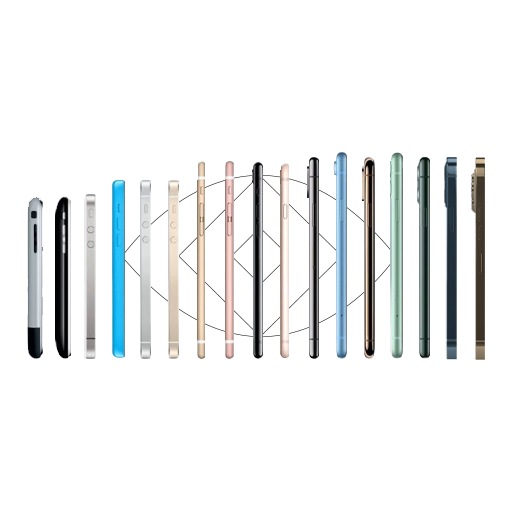Apple is grappling with a case of iPhone fatigue after the sales for this smartphone appear to have run into a brick wall. Apple’s latest golden child, the iPhone Xs, hasn’t taken the market by storm, at least not the way the tech giant expected it to. The word on the street is that the demand for the new iPhone lineup is weak, and is tapering off slowly. Is the charm wearing off?
To boost the sales of the phone, Tim Cook is trying to rev up the company’s marketing efforts, after he was done blaming everything from China to Apple’s own replacement policy for declining sales. The company has even started offering more-generous-than-usual trade-in terms for older phones and sending push notifications promoting their latest phone. Very much unlike Apple, right?
To be honest, these efforts are starting to look more and more desperate by the day. And from where I’m sitting, well outside the walls of Apple’s gleaming spaceship campus, it’s pretty easy to understand why they’re struggling with the sales. To begin with, the phones are too darn expensive. Year after year, they’ve just been hiking up the prices indiscriminately, believing that people will continue to line up to buy the latest handsets. No, sir, they won’t.
But exorbitant cost isn’t the only reason why iPhone sales are falling. Here’s a list of few of the other factors, that we feel are affecting iPhone sales. And very helpfully, we’ve also listed some suggestions for Tim Cook and his team about what they can do to get themselves out of this sticky situation.
The Paradox Of Choices
Remember the black and white days of the magnificent iPhone? Nope? We don’t either. Oh, don’t blame yourself. Blame the mind-boggling, messed up naming pattern of the iPhones. Apple has always adopted a devil may care attitude when it came to naming their phone. After the original iPhone, it went straight to iPhone 3G, followed by the 3Gs. For a while, there was a happy harmony – iPhone 4, 4s, 5, 5s, 6, and 6s. So there was a 5c as well, but we’ll let that pass.
But after iPhone 7, things went slightly berserk. 7 was followed by iPhone 8 and 8 Plus. 9 was completely ignored and then came the X and the X-lings: Xr, Xs, and Xs Max. This weird naming scheme has seriously screwed up with our brains. I mean what will the 2019 iPhones be called – iPhone 9, iPhone 11, iPhone XI, iPhone X-treme, iPhone XXX?
The iPhone marketing team should really consider a simpler naming scheme. A more minimalist moniker strategy pretty much speaks to Apple’s wider aesthetic and design philosophy and it could help the Cupertino tech giant do away with the naming conundrum it introduced in 2017.
Revisit The Past
God knows how many times I had wished that iPhone Xs was closer in size to iPhone 4 and that the Xs meant ‘Extra Small’. Why? Well, for starters, iPhone 4 was the perfect phone. It was compact, fast, and beautiful and its form factor perfectly adjusted to your hand’s anatomy. Nothing was superfluous. As you would’ve already guessed, it was my favorite iPhone ever, all thanks to it being manageable, simple, and comfortable to use. Oh, how I miss the good old times! But this isn’t just idle nostalgia.
There are many like me out there who are eagerly waiting for the resurrection of smaller and affordable iPhones, many who wouldn’t resort to selling their kidneys to get the latest iPhones (yup, that actually happened!)! And that’s one of the reasons why iPhone Xs, despite being the ‘revolutionary step into the future’, failed to do well in the market. So, the need of the hour is a phone that is designed to serve you, instead of absorbing you into their giant screen.
Enough With The Updates
The question here is why is Apple even racing to release a new device every year? The answer is that just like its rivals, Apple is beholden to an annual smartphone update cycle and a biannual major-upgrade cycle. Their argument – With a regular yearly production cycle, a new phone model gives consumers a reason to upgrade even if their old phone is working perfectly fine, and those upgrades are obviously an important revenue stream for the company. Great, just one problem…
Many consumers may want a better phone, but not a drastically different-looking phone or experience. With regular updates, progress chugs along, and it’s not until a few years have passed that we look back and realize “Oh my! Smartphones are leagues better than they used to be”.
We’ve reached a point where many of these ‘miraculous’ updates are so incremental that the average human (even Apple fanatics) may have trouble noticing the improved processor speed, or a wider color gamut, that this year’s phone offers over last year’s. So Apple should abandon the well-entrenched tradition of hitting an annual refresh, or the next big Apple event might not be that big after all.
Go Easy On The Price Tag!
Saving the obvious for the last, I know that Apple takes pride in being the premium brand, but it’s about time it snaps back to reality.
Yes, Apple gets a big boost from raising prices every year, but it’s starting to look like a one-trick pony. I mean yeah, the phones today are leaps-and-bounds better than the first models. The phones today have bigger, higher resolution screens, faster processors, improved cameras, and built-in facial recognition systems. And they can do things that the first gen iPhones couldn’t do like catch a Pokemon on the street, layout virtual furniture of a metro platform, shoot HD movies, make video calls, and run multiple apps at the same time.
But guess what? Lots of other phones offer similar features these days, and they don’t leave you broke and homeless after the purchase. Even if the company is relying on loyal Apple fanboys to help them navigate through rough water, the number of people who can afford to plunk down on lac rupees for a phone is fairly small. And the number of customers who can afford to buy a new iPhone every year is even smaller, especially if you compare it with people like us who cannot afford a phone that costs Rs. 50,000 or Rs. 35,000. Therefore, it’s likely that Apple will sell a whole lot more phones if they were do to some considerate pricing.
Apple has got some of the most loyal customers in the world. And for years, we’ve been willing to pay a substantial premium for Apple products all because we felt that Apple’s well designed and easy-to-use devices were worth the extra cost. But lately, it has got us feeling like the company is taking advantage of that loyalty to take us for a ride.
Apple has got the reality check that it needed to wake up from the iPhone euphoria. How they change and correct their course in the next couple of years will go a long way in defining the future success of the world’s most popular smartphone. And we are waiting and watching!




